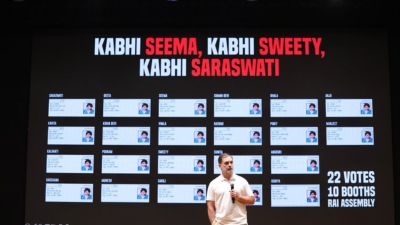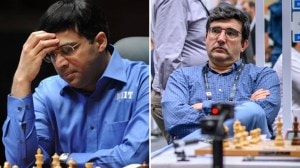WATER WARS
The Hogenakkal water dispute is the latest in a series of such rows in the country.

The Hogenakkal water dispute is the latest in a series of such rows in the country.
Vansdhara river
In February 2006, Orissa sent a complaint to the Centre objecting to Andhra Pradesh building a flood flow canal at Katragada and sought a tribunal to settle the dispute. It also raised the issue of scientific assessment of available water in Vansdhara at Katragada and Gotta Barrage and the basis for sharing the available water.
Status: The Centre has held several rounds of talks between representatives of the two state governments to reach a negotiated settlement.
Mahadayi/ Mandovi River
Karnataka’s plan to divert 7.56 tmcft of water from the Mahadayi river (the Mandovi in Goa) through the Malaprabha reservoir to provide drinking water to Hubli-Dharwad and parts of Gadag, Belgaum and Bagalkot districts has been in limbo because of Goa’s opposition since it was first proposed in 2001. Of the river’s total yield of about 200 tmcft, the CWC said Karnataka’s share is 45 tmcft. But Goa moved the Supreme Court seeking directions to stop the Karnataka Government from implementing the project, also known as the Kalasa-Banduri Nala project.
Krishna River
Karnataka, Andhra Pradesh and Maharashtra have at different stages raised objections to projects built on the river. Going by the original award of the Krishna water dispute tribunal, Krishna water was to be shared between three riparian states—Karnataka, Andhra Pradesh and Maharashtra—in the ratio of 560 tmc, 800 tmc and 700 tmc, respectively. While the tribunal had allocated about 155 tmc for the Almatti and Narayanpur dams, the Karnataka government went ahead with construction activity on the Almatti dam and decided to extend its height up to 524 meters. The dam was designed to irrigate 622,000 hectares of command area in Karnataka’s drought-prone districts of Bagalkot, Bijapur, Gulbarga and Raichur and generate 290 MW of power. However, the AP government moved the apex court and got the height restricted at 519.6 meters. A new tribunal is hearing the matter.
Cauvery river
The genesis of this dispute lies in two controversial agreements signed in 1892 and in 1924 between the Madras Presidency and the Princely State of Mysore. Karnataka claims these agreements dealt its own interests a heavy blow and now wants a renegotiated settlement. But Tamil Nadu says it has come to depend very heavily on the existing pattern of usage. The Centre finally constituted a tribunal in 1990 to look into the matter. The tribunal delivered its final verdict on February 5, 2007 and allocated 419 billion ft³ of water annually to Tamil Nadu and 270 billion ft³ to Karnataka; 30 billion cubic ft to Kerala and 7 billion cubic ft to Puducherry. But all the four states have decided to file review petitions.
Ravi and Beas
The roots of the inter-state dispute began in 1966, when the undivided state of Punjab was reorganised. The Reorganisation Act mandated a division of undivided Punjab’s assets in a 60:40 ratio. Since the Ravi-Beas system’s waters could not be physically imported to Haryana, the state’s share was to be taken out from the Satluj river in Punjab through a canal fed by the Bhakra-Nangal dam. But Punjab thought it was being robbed of its rightful share. Now the issue is again back in court.
Other disputes
Babhli barrage
In May 2005, Andhra Pradesh complained to the Centre that Maharashtra was constructing a barrage in the submergence area of Sriram Sagar Project. This, Andhra said, is in violation of the GWDT award. After several rounds of meetings, a technical committee was set up to go into the details of the project. Last year, the matter came up in the Supreme Court, which said that though Maharashtra could go ahead with the construction of the barrage, it will not install the proposed 13 gates until further orders. The mater is in court.
Mullaperiyar issue
In 1886, a lease agreement for 999 years was signed between the Maharaja of Travancore and the Secretary of State for India for Periyar irrigation works. The deal granted full right, power and liberty to the Secretary of State for India (now Tamil Nadu) to use the land. Another agreement in 1970 permitted Tamil Nadu to generate power too. The Mullaperiyar dam was constructed during 1887-1895 across Periyar river in the then Travancore state (now Kerala) after the deal. The Periyar dam with full reservoir level of 152 ft provides for diversion of water from the reservoir through a tunnel to Vaigai basin in Tamil Nadu for irrigation. In 1979, reports appeared in Kerala Press about damage to Periyar Dam. One of the emergency measure was to keep the shutters of spill way raised fully to lower the reservoir level to 136 ft. The matter is subjudice.
In the US
Montana-Wyoming dispute The Tongue and Powder rivers flow out of mountains in Wyoming and cross into the plains of Eastern Montana state. Montana contends that Wyoming is taking more than its share of water allowed under terms of a 58-year-old deal. Wyoming denies this.





- 01
- 02
- 03
- 04
- 05


























